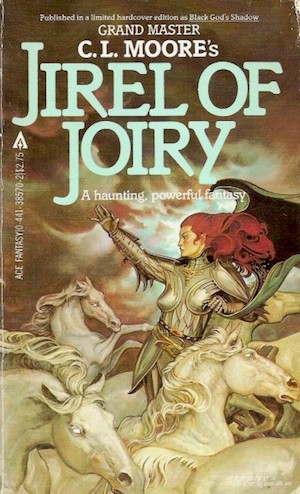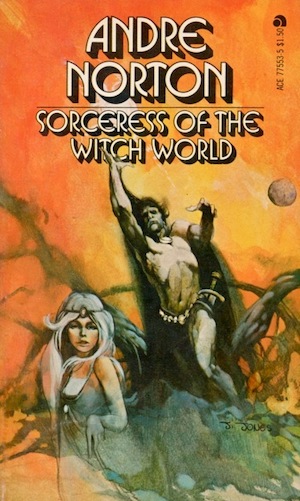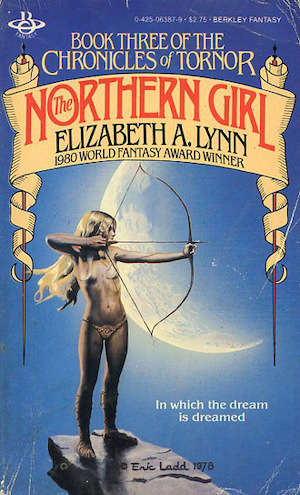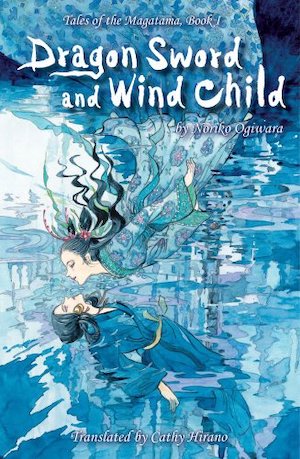Nature’s cycles proceed inevitably. The sun will set, then rise. The Earth will orbit the sun. The populations of rabbits and lynxes will rise and fall. About once a decade, someone will assert that women are writing fantasy for the very first time in human history.
The latest assertion was penned by a Guardian writer who I am sure can boast of fields in which they are quite well-informed, although apparently none of them involve the long and storied history of women writing fantasy novels. I for one applaud the courage of a person writing outside their field of expertise. One’s reach should always exceed one’s grasp.
Romantasy is, of course, a useful marketing term designed to guide readers to works exhibiting the qualities for which they are looking. The idea is that if people can find the sort of thing for which they are looking, they are more likely to buy it. However, like every other genre, there are works that predate romantasy that would have been classified as romantasy had that term existed.
Consider these five works.
Jirel of Joiry by C. L. Moore (1969)

Jirel is ruler of a small French fiefdom. Overconfident usurpers, evil sorceresses, or besotted gods who mistake Jirel for some fragile flower to be plucked at whim inevitably discover that Jirel protects her prerogatives ruthlessly. Often this is the final discovery her foes make. Should violence fail Jirel—a rare thing—Jirel will resort to even darker measures. And if she sometimes realizes too late that perhaps she was fonder of her foe than she realized before dispatching them? That will not slow her hand when the next vainglorious fool challenges Jirel.
The date above the refers to the collection Jirel of Joiry. The six stories contained within date from the 1930s. Readers seeking more recent work may wish to investigate New Edge Sword & Sorcery, which will feature Molly Tanzer’s authorized Jirel Joiry story, the first new Jirel story in almost eighty-five years.
Sorceress of the Witch World by Andre Norton (1968)

Kaththea’s lamentable propensity for calamity and kidnapping strikes again. Swept away by an avalanche, Kaththea is captured by Vupsall nomads. Their Wise Woman Utta has need of one such as Kaththea. Old Utta will soon die. Kaththea’s magic potential make her a suitable Wise Women candidate. Kaththea yearns to escape. There is an obvious ally to help her flee. Alas, Kaththea is painfully aware that her primary talent may be trusting the wrong men…
In Kaththea’s defense, the bad decisions she makes in this book pale against the ones she made in the previous book, Warlock of the Witch World. At least in this one, she has not fallen for a hunky Lord of Pure Evil. She does learn!1 And the fact that her magic was temporarily locked away due to the events in the previous book facilitates many exciting adventures in this volume.
The Castle of Dark by Tanith Lee (1978)

Raised in the Castle of Dark by two ancient hags, Lilune sleeps by day and wakes at night. Her meals are a mysterious dark liquid. These facts are peculiar… but to Lilune they are just same old, same old. Boring. So she casts a simple spell that will enchant traveling harpist Lir into rescuing her from the Castle of Dark.
There are many heedless fantasy protagonists I could mention who would rescue a woman without paying much attention to such peculiar qualities as aversion to sunlight, death-like daytime sleep, or odd dietary needs—protagonists such as Northwest Smith—but Lir at least has an excuse, having been bewitched by Lilune.
The Northern Girl by Elizabeth A. Lynn (1980)

Bondservant to powerful Arre Med, seventeen-year-old Sorren might well have spent her entire life in contented servitude to her comparatively benign mistress. Fate (and the schemes of Arre’s younger brother2) dictate otherwise. Sorren will leave her familiar world behind to find her proper role far from the only city she knows.
The Northern Girl has a number of stock plot elements, such as an orphan girl with special powers, political machinations, and so on, none of which head in the direction readers may expect. Lynn had a very clear idea where she wanted this coming-of-age story to end and she did not let herself get distracted from her goal.
Dragon Sword and Wind Child by Noriko Ogiwara, translated by Cathy Hirano (1988)

Demigod Prince Tsukishiro resolves that orphan Saya, whom he has just met and about whom he knows nothing, must be his handmaiden. It’s a fairytale romance…a very dark one. In every one of Saya’s incarnations, she has met the Prince. In all of Saya’s incarnations, she perished almost immediately. Nevertheless, the former Water Maiden Sayura (of whom Saya is just the latest version) has a grand plan in which the current incarnation must play a role… even if reincarnation-induced amnesia means that Saya has no idea what the plan was, or what her role was to be.
Dragon Sword and Wind Child is part of a trilogy, Tales of the Magatama. Dragon Sword and Wind Child functions as a standalone fantasy novel. This is fortunate for Anglophone readers because while the second volume, Mirror Sword and Shadow Prince, has been translated into English, as far as I know the third one was not.
These are merely the first five works that came to mind. No doubt there are hundreds that I could have mentioned. Feel free to correct my lapses in the comment section below.










